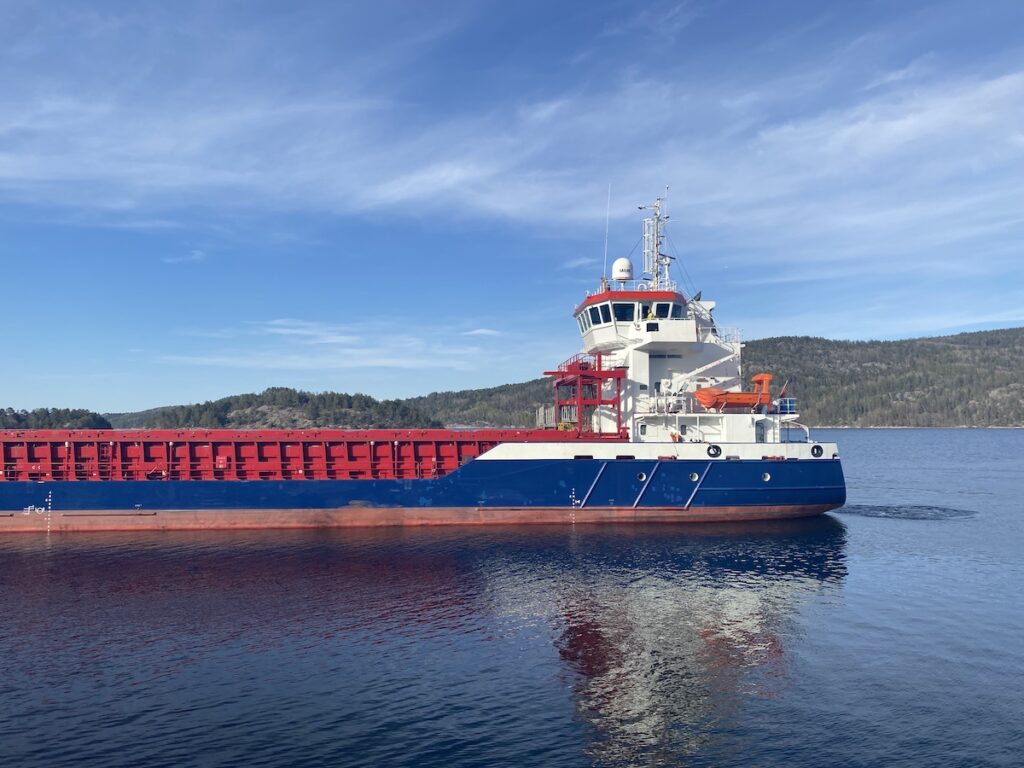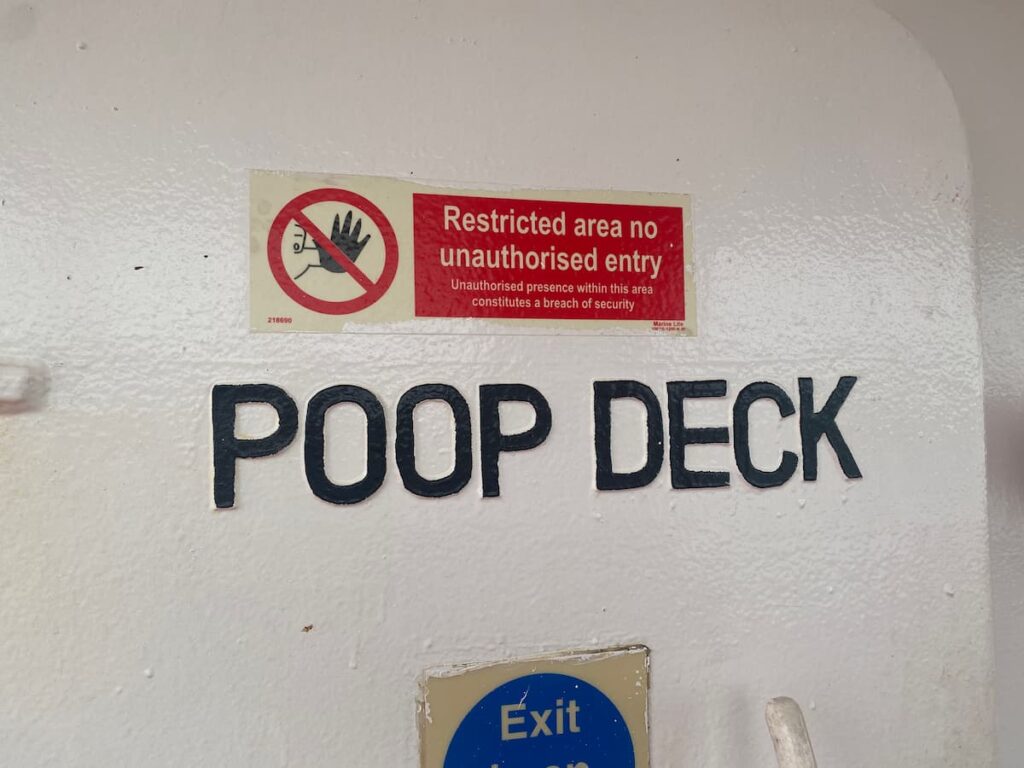If you’ve ever heard the term “poop deck,” you may be curious about its origins and definition.
A ship’s aft (rear) is where the poop deck on ships is, a short, tall deck. It had been employed historically to offer a high point for observations and navigation. Because they are no longer necessary, due to technological advancements and better design features most modern ships do not have poop decks.

The ship’s “poop deck” has nothing to do with excrement, despite how funny the phrase sounds in English. It was a crucial component of ship design even though it was never utilized for any bathroom-related purposes. Let us get into more details to learn more about the different functions of the poop deck, its history, and so on.
Poop Deck: The History
Its root is the word La Poupe, which is French for “the beak.” The shape of a boat’s bow is described here, with the stem being higher than the stern. When the name initially entered common usage in English, it alludes to how the bow resembles a bird’s bill. However, the definition expanded throughout time to include any elevated spot where people can take in views.
When translating a French author Christine de Pizan’s book into Middle English in 1489, the term “pouppe,” which means “the hinder most section of the ship,” was first used. Fast forward to the 15th century, when the Middle English gave puppis their unique twist by naming it “pouppe.”
The phrase “poop deck” as we use it today was first used in William Sutherland’s 1717 book “Britain’s Glory: Or, Ship-Building Unveiled.” In conclusion, the phrase “Poopdeck” is a translation from Middle English of a Middle French term that was borrowed from Latin.

Near the front of the ship, the Titanic had two poop decks. Passengers could gaze down onto the waterline from these tiny balconies. All the males went up together and all the women went up individually because there were only four restrooms onboard. One bathroom was used by each group. There was one bathroom set out for kids.
The Titanic had a poop deck. The Titanic was an ocean liner, even though many people thought it was a cruise ship.
Third-class passengers made use of the Titanic’s deck B poop deck, which was situated outside and available for recreation.
The Function Of The Poop Deck
The elevation above the poop deck was crucial for ship navigation and design.
Traditionally, the captain used the deck to keep an eye on the crew and steer the ship while maintaining safety at the highest points. The helmsman would control the vessel from the quarterdeck directly in front of the poop deck.
An elevated stern deck is no longer necessary. Radar systems and weather monitoring are just two examples of the technological advancements in navigation that modern ships can take advantage of. The captain and crew can navigate even when there are poor visibility thanks to these systems.
A few of the terms which were used in association with the poop deck were swabbing of the poop deck which meant mopping the stern deck. To prevent fires from being started by the cannons, guns, and gunpowder used during skirmishes, the stern deck of the ship needed to be mopped often to keep the wood moist, slow decomposition, and prevent fires.
What Is The Difference Between A Poop Deck And A Quarterback?
A quarterback and a poopdeck are not the same things. A quarterback is normally found on smaller ships like yachts, whereas a poop deck is typically found on big passenger lines.
Passengers can enjoy stunning ocean views from both varieties of decks. On the other hand, a poop deck lets you observe the water beneath you. A quarterback offers you a unique viewpoint. Instead of looking down, it allows you to gaze over the side of the ship.
Do Any Of The Modern Vessels Have A Poop Deck?
Unfortunately, most modern ships no longer have what is technically known as a poop deck because the ship’s wheel used to be situated in the uppermost rear, or the stern, close to the rudder to lessen the number of pulleys and ropes required for steering.
The poop deck was raised to provide the captain and pilot with an unobstructed view of the ship’s front. Well, the ships of today are very different from the ships of the past.
Summary
A high-up platform called a poop deck is typically utilized by ship commanders and officers for observation and navigational needs. The bridge, which is found at the ship’s bow, is where modern cruise ships conduct their operations.
A small, elevated deck that was formerly used for navigation is known as a “poop deck.” Since they are no longer necessary, modern cruise ships do not have poop decks; the Titanic was one of the last ships to have a conventional poop deck.
- Types of Gas Carriers as per IGC Code – April 22, 2025
- Wind-Assisted Propulsion Systems (WAPS): A Game Changer for Maritime Decarbonization – February 6, 2025
- 10 Boat Salvage Yards in California – January 25, 2025




